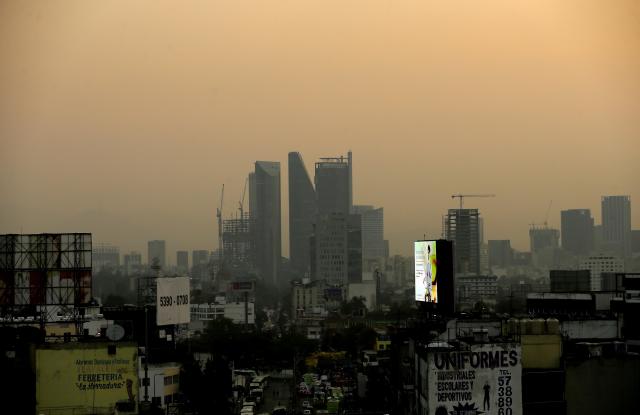Mexican Retailers See Big Losses, Discounts in Virus Aftermath – WWD
MEXICO CITY — Mexican retailers face sales declines of up to 70 percent this year as COVID-19 continues to rip through Latin America’s second-largest economy with no signs of easing.
“We have started to reopen in phases, but there is still a lot of uncertainty,” said Marcela Muñoz, a retail analyst with Vector Casa de Bolsa brokerage, adding that leading department stores such as Liverpool or El Palacio de Hierro have been hit hard by the pandemic.
“Department store sales declined 50 percent last month on a same-store basis and they had to stay closed in April and May,” said Muñoz. She added that May turnover recovered compared to April, when it fell 73 percent.
Sales are also expected to gradually increase this month as the government allowed some retailers to resume operations this week after three months of lockdowns. In Mexico City, for example, Liverpool, El Palacio de Hierro, Sears and other big-box retailers have opened, though boutiques in trendy quarters such as La Roma or Polanco remain mostly shuttered, experts said.
Like others around the world, Mexican retailers have bolstered their online offerings to compensate for plunging trade in physical stores, Muñoz said. One such event, called Hot Sale 2020, outstripped expectations, she noted, reporting an 82 percent revenue hike versus last year.
The first reopening phase will restrict most stores from operating above 30 percent capacity or dictate whether they can open at all, depending on their states’ virus alert designation.
“It all depends on what semaforo [traffic light in English] you are in,” said Anna Fusoni, a Mexican fashion expert, adding that large stores are open in the country’s sprawling capital as well as in Guadalajara, Mexico’s second-biggest city, but not in Nuevo León State, home to the other key northern metropolis of Monterrey.
“Liverpool is open in Cuernavaca,” for example, a town where many of the rich have second homes and VIP weddings are held, “but they can only have 30 percent capacity,” in line with restaurants and other merchants around the country that have been able to open, said Fusoni.
The future looks grim for retailers, also as it’s unclear how they will manage to keep their sales floor safe to avoid future outbreaks. “They have talked about sanitizing stores and clothing, but it’s not clear how and if this will succeed,” added Fusoni. And while merchants force customers to wear masks and undergo temperature screenings, many people are still out and about without wearing personal protective equipment, she added.
Boutiques in Mexico City’s “Fifth Avenue equivalent” — Paseo Masaryk — remain shuttered along with similar shops around town until the government declares when they can open in a second phase.
Many restaurants, meanwhile, are scrambling to survive amid the 30 percent occupancy restriction.
“We are going to see sales [decline] more than 50 percent this year,” Fusoni predicted. “It’s going to be tough.”
If the virus is not beaten soon — Mexico had 221,000 cases and 27,100 deaths as of press time with no flat line in sight — some of the country’s leading department store chains may be forced to close, analysts said, though they added their recent success in boosting online sales will provide them with an oxygen tank until things improve.
Fashion shows or trade fairs are also quickly going online, leaving buyers with fewer options to source product in a move Fusoni sees as adding challenges for the industry. Intermoda, the country’s biggest sourcing fair, is set to hold a hybrid physical and online event in September, a shift Fusoni expects will make sourcing for local fashion brands more complex.
Fusoni, who also helps train young designers at an Intermoda incubator, said Mexico City began easing social gathering restrictions three weeks ago and that since then, many people are out shopping and dining without following safety protocols.
Moving forward, many wonder how much Mexico’s deepening recession (gross domestic product is seen plunging up to 9 percent) will impact consumers’ ability to buy clothing.
“The big problem is not whether stores will reopen [as some may not survive the shutdowns] but whether people are going to buy even basic items like a T-shirt because if you don’t have money you are not going to buy apparel,” said retail and textiles consultant Arturo Rodriguez.
“Retailers are going to suffer a lot” and will drag apparel manufacturers with them as they won’t see many orders and merchants have an overstock of unsold items. “We don’t even know if schools will reopen in August, a time when many parents buy apparel for their kids,” lifting potential sales, added Rodriguez.
Mexicans will likely begin purchasing stores’ excess inventory at huge discounts without concern of them being off-season, while the economy shrinks, Rodriguez predicted.
And while some firms avoided bankruptcy in their digital push, brick-and-mortar sales continue to make up the lion’s share of their business.
“Levi’s Mexico has reported their online sales increased, but not enough to compensate for what they stopped selling physically,” said Rodriguez. “Even then, they had to offer large discounts or specials such as ‘buy one item and get one free,’” he concluded.



